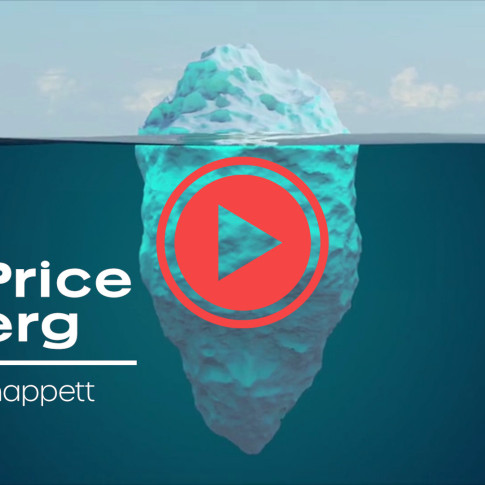The Price Iceberg - with Ivan

The Price Iceberg really goes over what goes into the pricing of products. Like an iceberg, it's not only what you can see…
Video Transcript
Hello, I'm Ivan here from Holm Filters.
Today I just wanted to talk over the price iceberg.
The price iceberg isn’t just talking about the cost of the product, what you might be purchasing, but all the hidden costs.
Typically, in an iceberg we see 10% above the waterline and 90% is hidden.
So, at a pricing exercise, we're often looking at what we can see, which might be the cost of the product, the pound notes, but what we may not consider is some of the cost that sits under the waterline.
If you think of shopping, you might tend to shop at three or four different supermarkets because bits are cheaper at one and… Tesco's for others and Sainsbury’s for something else.
And that's great because you can compare the cost of the product. But what often isn't thought about is the cost of travel and the cost of parking, the cost of fuel.
And they’re all the bits that might sit under the waterline.
So in our environment, we’re selling filters of course, and what everyone's looking at is the pound note of the product. And that's very important to make sure that we get that price correct.
But what a lot of people are maybe not considering, is other implications. We have things like:
- Delivery. Is there delivery costs?
- Multiple suppliers. The cost of raising a purchase order.
- Sometimes people are having to buy bulk, so it will be additional inventory. The cost of the product maybe slightly lower, but you've had to buy more volume.
- It could be product quality. Perhaps the cost is lower, but the quality is less.
So when we're considering the product, we really do have to think more than just the raw cost of the product. And in fact, in the filter world, there is the cost of the filter, but one of the big things is downtime. What's the implication of not having that product? You could buy a product for a pound cheaper, but it takes a week to arrive and that cost of downtime for an asset, is clearly going to be more than the £1 saved.
And that really is a very short and very basic example of what the price or cost iceberg looks like.
I hope that's helpful to any viewers that happen to be interested. Thank you.
